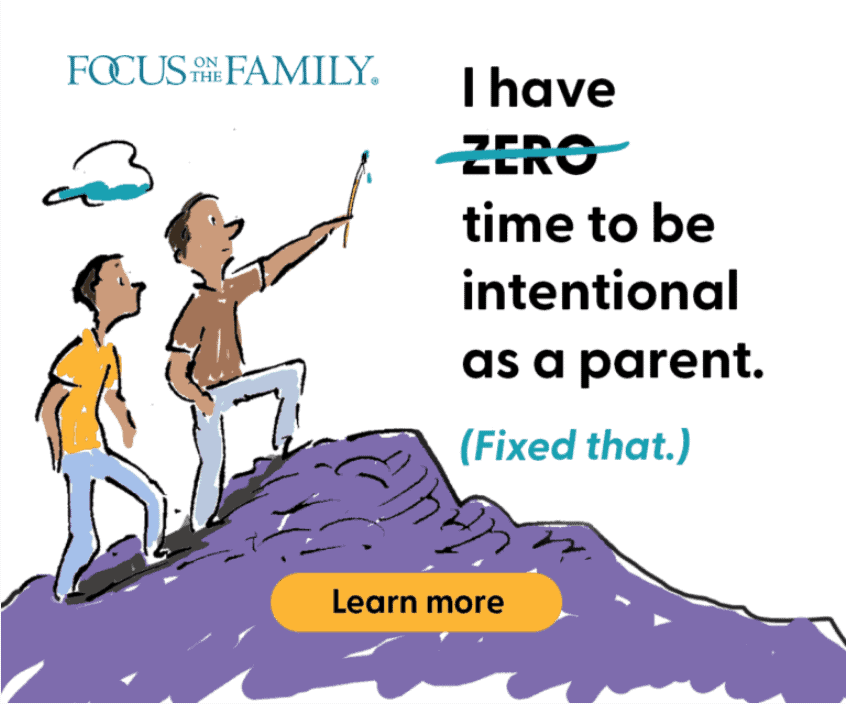We’ve all felt worried or anxious at one point or another. Taking a test in school, interviewing for a job, undergoing a tax audit, facing an unexpected health crisis – these are the types of situations that many people find stressful and which might provoke intense feelings of unease, even marked by anxiety disorders.
As a psychiatrist, I’ve brought to many people’s attention the fact that many of the troubles we worry over never do actually come about. Furthermore, when we take the time to realistically consider and work through worst-case scenarios we can enjoy a measure of clear-headedness and calm when considering potential problems. So while worry and anxiety are unpleasant, these feelings can be quite useful if they prompt us to plan and take action. For example, considering the situations above, if worry causes us to study harder, prepare for the job interview, keep our tax records and financial paperwork in order, or attend to the needs of our physical body, these anxious feelings will have served a good purpose.
We all worry to some extent from time to time, but most people move through life without being debilitated by the fear of life’s difficulties and unknowns. Some of us, though, find our lives disrupted by fear and anxiety.
Anxiety as a mental health concern
God gave us the capacity for fear to protect us. Fear not only motivates us to avoid hazardous situations, but it also helps to prepare our bodies to fight or flee when we are in danger. Unfortunately, our brains and bodies can act as if we’re facing an imminent threat even when we’re not, and feelings of fear can explode into uncontrollable dread and panic. These feelings can arise suddenly even in the absence of any discernible trigger. One can experience worry or fears about future uncertainties that are so overpowering that normal everyday functioning is impaired. These are just a few of the signs of a class of illnesses known collectively as anxiety disorders.
As is common with other mental health issues, people with anxiety disorders can feel very alone, like they are dealing with something that no one else is facing. The fact is, anxiety disorders are not uncommon. It’s estimated that each year about 18 percent of adults in the U.S. deal with an anxiety disorder.
Let’s take a look at some of these disorders:
Generalized Anxiety Disorder (GAD) – People who suffer from this disorder experience excessive anxiety or worry about the things of everyday life in a way that causes distress or significant impairment in normal daily functioning. For a diagnosis of GAD to be made, feelings of anxiety must occur most days for six months. GAD sufferers may have feelings of restlessness or edginess, become easily fatigued, have difficulty concentrating or experience their mind going blank and experience irritability, muscle tension or sleep disturbances.
Treatments for GAD include psychotherapy such as cognitive behavior therapy to address patterns of thinking that lead to anxiety. Certain medications may also be of help.
Panic Disorder – The hallmark of this disorder is sudden, terrifying and often unexpected panic attacks. There are a number of symptoms that may accompany these attacks: an elevated heart rate or a pounding heartbeat, sweating, trembling or shaking, the feeling of being short of breath or being unable to breathe, a sensation of choking, chest pain or discomfort, nausea or abdominal distress, dizziness, lightheadedness, or feeling faint, feelings that one is not experiencing reality or is detached from oneself, fear of losing control or going insane, a sense of doom or imminent death, numbness or tingling sensations, and chills or hot flushes.
A person having a panic attack may believe they are having a heart attack. The intensity of these panic attacks can be so great that people may live in constant fear of the next attack.
Psychotherapy can be helpful in the treatment of panic disorder, as can the use of certain medications. Many people respond best with a combination of psychotherapy and medication.
Agoraphobia – This disorder is characterized by a dread associated with certain places, usually public ones. Places that provoke discomfort often are vastly open or crowded spaces, and sufferers may fear being unable to escape. They may feel helpless or embarrassed at the thought of having feelings of anxiety in public places.
Consequently, some with agoraphobia may refuse to leave their home, or leave it only with feelings of great distress Agoraphobia can be treated with psychotherapy or medication, or a combination of the two.
Social Anxiety Disorder – While a lot of people find novel social situations (like going to a party where they don’t know anyone, or going on a blind date) to be a bit awkward or stressful, people with social anxiety disorders – sometimes called social phobias – have an intense, excessive or persistent fear of being judged or scrutinized by others or being humiliated in social situations. Individuals with social anxiety disorder might seemingly get through a social event okay, but the anxiety felt before and during the situation can be excruciating, and the individual may worry for hours afterward about how they were perceived. The anxiety can be such that it can even provoke a panic attack when social situations approach or are contemplated. The diagnostic criteria include avoidance of social situations, along with distress that interferes with a normal routine or normal functioning at work or school. For adults, this persists for at least six months.
Certain medications may be helpful in the treatment of social anxiety disorder, as can psychotherapy.
Specific Phobias – Specific phobias are marked by a persistent, powerful, irrational fear of something. The object of fear may be something that most other people would encounter with some sense of discomfort (like snakes) but the fear may also focus on apparently harmless things (clowns, kittens). Sometimes even just thinking about the object of the phobia can bring on intense anxiety, and encountering the feared object or situation can provoke a panic attack. Many phobias can interfere with an individual’s ability to function. A person with a phobia against flying, for example, might turn down job offers or choose career paths based on the fear that air travel might be involved.
Effective treatment of specific phobias involves psychotherapy. One particular form of therapy that can be useful is called desensitization. In desensitization therapy, the patient is asked to experience or think about the object of the phobia while at the same time the patient employs relaxation techniques. By confronting anxiety-provoking thoughts while relaxing, the patient finds that specific thoughts or experiences do not have to be linked to fear and anxiety.
Another form of therapy called eye movement desensitization and reprocessing (EMDR) has been gaining popularity in recent years. EMDR involves the patient visually tracking the hand movements of the therapist while the therapist prompts the patient to think about the object of the phobia. While a number of individuals have claimed success with this mode of therapy, research into EMDR is ongoing.
The list of anxiety disorders above is not exhaustive, and DSM-5, the latest version of the manual used by mental health professionals to diagnose mental health conditions, mentions several other conditions that fall within the classification of anxiety disorder.
In previous years the category of anxiety disorders had included two other conditions: obsessive-compulsive disorder (OCD) and post-traumatic stress disorder (PTSD). While both of these are characterized in part by feelings of anxiousness and discomfort, DSM-5 distinguishes OCD and PTSD from anxiety disorders.
Obsessive-Compulsive Disorder (OCD) – Almost everyone has left their home only to wonder later if they’ve turned off the stove or locked the door. A person dealing with OCD, however, may have troubling thoughts (obsessions) like these that are persistent, recurrent and distressing. The obsessions that an OCD-sufferer may struggle with are varied.
Some individuals are preoccupied with symmetrical or ordered arrangement of objects and may feel troubled if objects are disarranged. Others may obsess over fears of committing a repugnant act of violence against a loved one. The fear of performing acts or harboring thoughts that are prohibited by one’s religious beliefs is a common obsession. Many Bible-believing Christians with OCD experience incredible emotional suffering over concerns that they might have committed the unpardonable sin (Matthew 12:31; Mark 3:28-29; Luke 12:10).
Often, people with OCD will engage in ritual or repetitive behaviors (compulsions) in an attempt to reduce the anxiety produced by their obsessions. For instance, a person might have an obsession with germs, and his compulsion might manifest as repetitive hand washing. The fear that an oven might have been left on might lead a person to check the oven to make sure it’s turned off not once or twice, but many times. Common compulsions also include counting things or placing items in a precise order. These compulsions are not only distressing, but they take so much time and energy that they interfere with the course of normal life.
Certain antidepressant medications have proven helpful in treating some individuals with OCD. Additionally, psychotherapy designed to desensitize sufferers to situations that prompt anxiety or compulsive behavior can be helpful.
Post-Traumatic Stress Disorder (PTSD) – This particular disorder has gained greater attention over the past decade as servicemen and women return from deployment having faced horrible and traumatizing circumstances. It is also being recognized more frequently as a common psychological result of violent crime, sexual assault, domestic abuse, and even motor vehicle accidents.
PTSD can occur when a person is involved in or witnesses a life-threatening event or one that causes or threatens serious personal harm to oneself or others. Intense distress may be caused by things that remind the person about the event (such as loud noises or being surprised by another person). They may experience distressing memories of the event, a sense that the incident is somehow being replayed (such as flashbacks), or have disturbing dreams about the event. They may avoid any conversation about the trauma or make special efforts to avoid activities or places that remind them of the trauma. Conversely, a person with PTSD may be unable to recall significant aspects of the trauma. They may become detached from others and find it difficult to show affection. They may find that they no longer enjoy things or activities that were once of interest.
Individuals who suffer from PTSD may also experience difficulty falling or staying asleep, or have difficulty concentrating. They may become hyper vigilant or be easily startled. They may become irritable or prone to angry outbursts. Symptoms of PTSD are distressful to the point of impairing normal functions, including causing significant social or occupational difficulties.
Several medications have been useful in treating PTSD, and certain types of psychotherapy, including desensitization therapy and EMDR, may also be helpful.





















